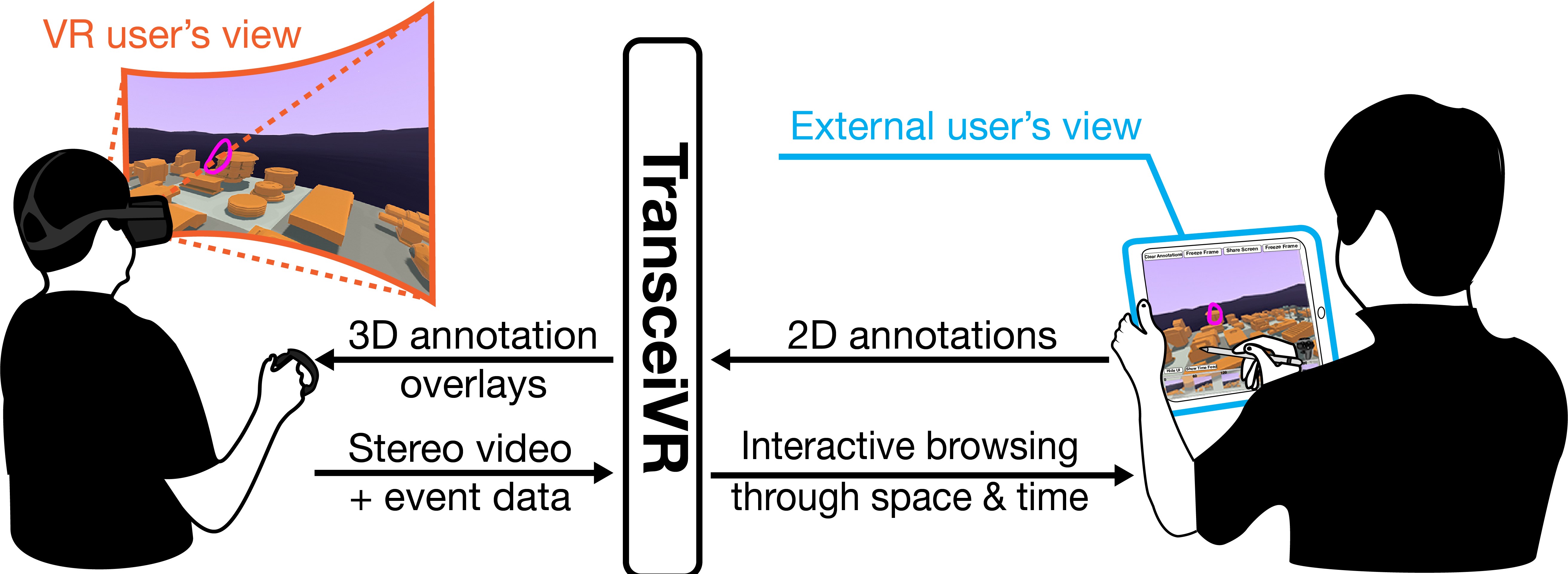TransceiVR
Bridging Asymmetrical Communication Between External and VR Users
Project Video
Talk Video at UIST 2020
Abstract: Virtual Reality (VR) users often need to work with other users, who observe them outside of VR using an external display. Communication between them is difficult; the VR user cannot see the external user’s gestures, and the external user cannot see VR scene elements outside of the VR user’s view. We carried out formative interviews with experts to understand these asymmetrical interactions and identify their goals and challenges. From this, we identify high-level system design goals to facilitate asymmetrical interactions and a corresponding space of implementation approaches based on the level
of programmatic access to a VR application. We present TransceiVR, a system that utilizes VR platform APIs to enable asymmetric communication interfaces for third-party applications without requiring source code access. TransceiVR allows external users to explore the VR scene spatially or temporally, to annotate elements in the VR scene at correct depths, and to discuss via a shared static virtual display. An initial co-located user evaluation with 10 pairs shows that our system makes asymmetric collaborations in VR more effective and successful in terms of task time, error rate, and task load index. An informal evaluation with a remote expert gives additional insight on utility of features for real world tasks.
